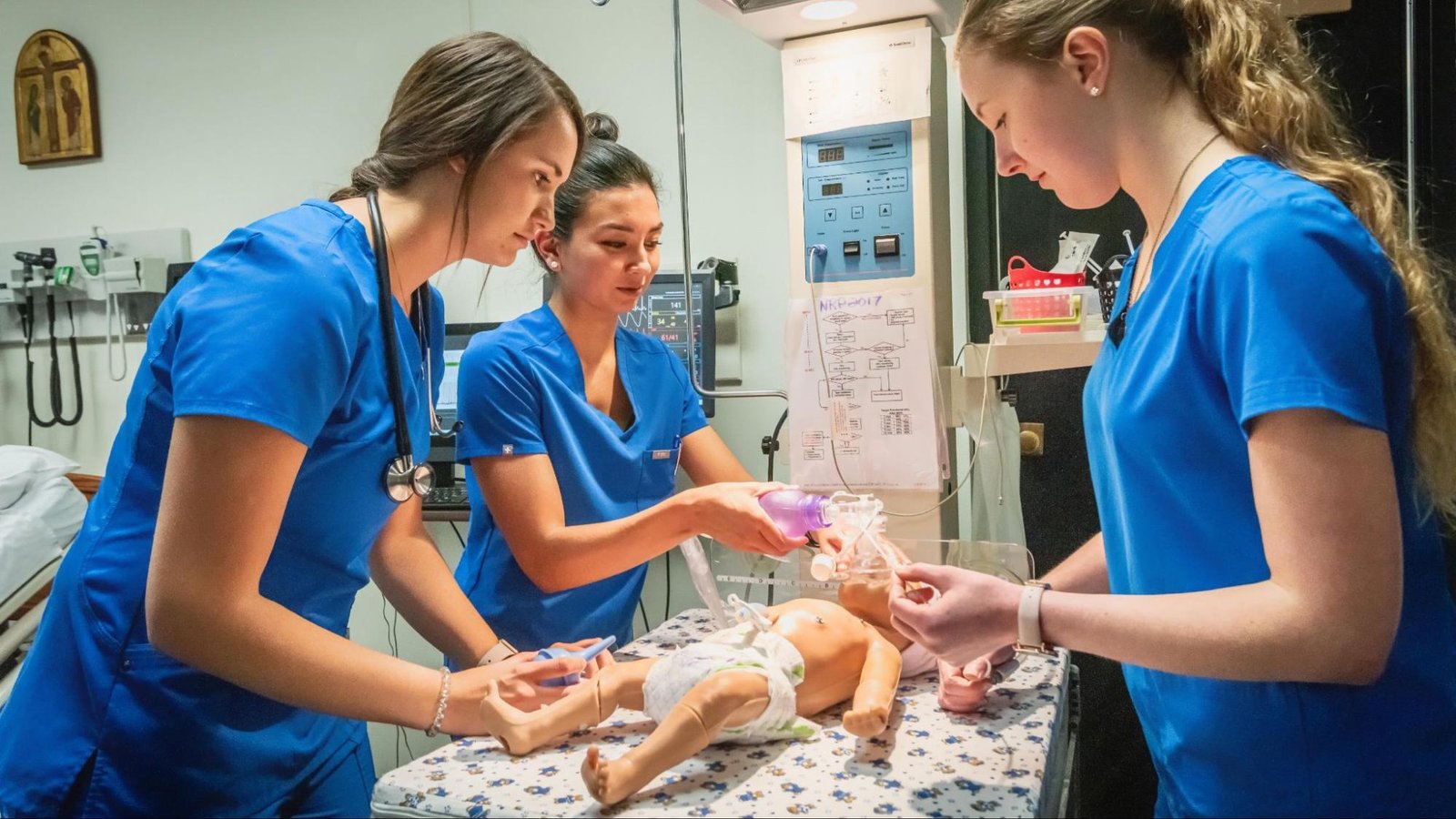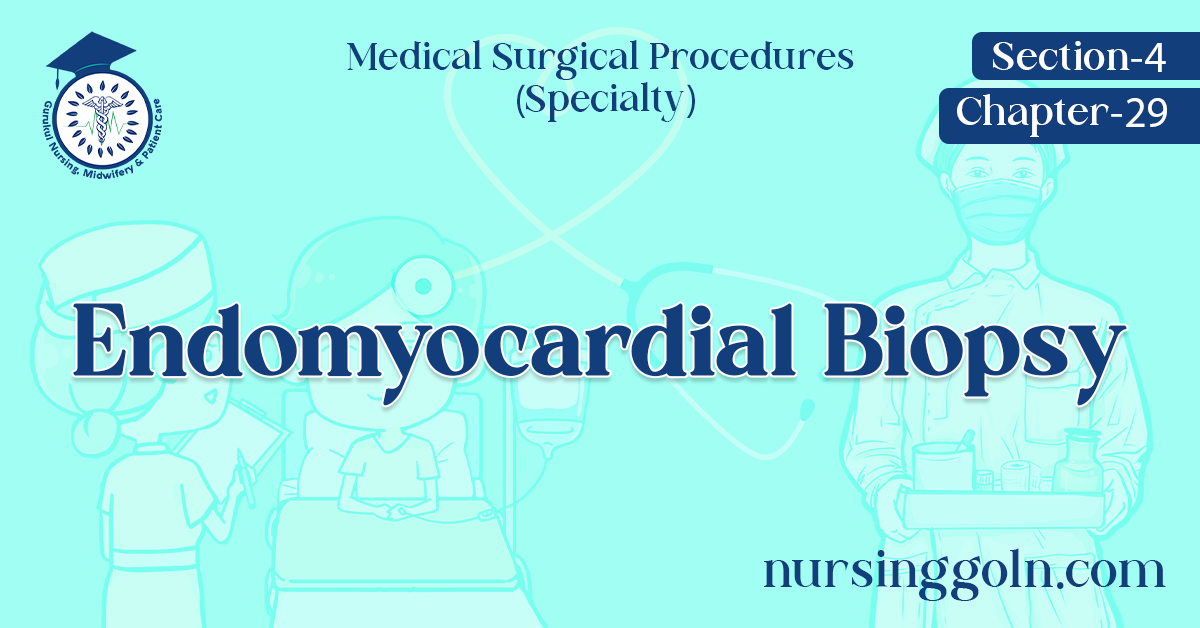Today our topic of discussion is Endomyocardial Biopsy.
Endomyocardial Biopsy

ENDOMYOCARDIAL BIOPSY
Endomyocardial biopsy is an invasive procedure requiring cardiac catheterization. It permits sampling of right or left ventricular tissue.
Purpose
- An endomyocardial biopsy is usually performed to determine if a transplanted heart is being rejected
- To diagnose myocarditis or doxorubicin (adriamycin) induced cardiomyopathy
- To determine the cause of restrictive heart disease.
Findings
- Doxorubicin-induced cardiomyopathy
- Cardiac amyloidosis
- Cardiac fibrosis (especially radiation injury)
- Changes cardiomyopathy
- Myocarditis
- Rejection of transplanted heart
- Scleroderma
- Toxoplasmosis
- Tumor infiltrates Vasculitis.
Interfering Factors
- Bleeding disorders
- Severe thrombocytopenia
- Systemic anticoagulation
- Uncooperative client.

Client Preparation
- Instruct the client about the purpose and procedure
- Inform the client that the table rotates and that the physician may ask the client to change positions or cough
- Explain the client that when the dye is given, a feeling of warmth or flushing or a metallic taste may be sensed
- Assist the precatheterization evaluation: blood test, including a prothrombin time test and a partial thromboplastin time test; an electrocardiogram: and chest X-ray
- Obtain client’s height and weight
- Assess the client’s fear and anxiety.
- Correct any misconceptions and reassure the client that the nurse, physician and technicians to assist during the procedure will be continuously present
- If contrast dye is going to be used, cheek for allergies
- Keep the client nothing per oral after midnight, except if the catheterization is planned for late in the afternoon.
- In that case, a clear liquid breakfast may be given
- Withhold the cardiac drugs as per the physicians order
- Prepare catheter site according to laboratory protocols.
- The femoral artery is commonly used for the percutaneous of the catheter.
- Usually, both sides of the groin are prepared
- Premedication is given as ordered to reduce the client’s anxiety.
- In some catheterization laboratories, the client is premeditated to decrease the risk of allergic reaction to the contrast dye
- Instruct the client to void before going to the catheteri zation laboratory.
Procedure (Fig. 29.104)
- The procedure involves a cardiac catheterization
- A catheter with a jaw like tip id inserted under fluoro- scopy, and several small tissue samples are obtained
- A right or left ventricular sample may be taken.
- For clients at high risk, such as those with a history of left ventricular thrombus or infarction, a right ventricular biopsy may be performed.
After Care
- Observe the insertion site of bleeding.
- Palpate around the punctured site to detect bleeding into tissue
- If bleeding is present, exert pressure just proximal to the puncture site with a gloved hand for a minimum of 15 minutes
- Monitor vital signs and cardiac monitor according to hospital protocol
- Check the distal pulse for artery patency
- Report immediately if any significant changes in vital signs, rhythm and circulation or occurrence of chest pain
- Assess postprocedure laboratory values, such as blood count, prothrombin time, electrolytes and creatine
- Instruct the client about strict bed rest for 12-24 hours and to keep affected extremity straight for 12 hours
- Encourage plenty of oral fluids
- Record type of cardiac catheterization done and client’s tolerance of the procedure.

Complications
- Accidental biopsy of papillary muscle or chordae tendineae
- Hemopericardium
- Cardiac perforation.
Read more:
